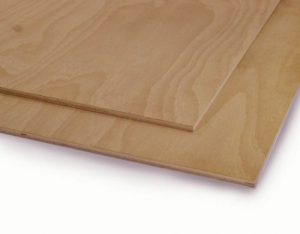Why You Might Need To Plyboard Your Subfloor
When it comes to laying a new floor, preparation is key. This is where plyboard enters the picture. Plyboard is often used as a subfloor material, providing a smooth and stable surface for the new flooring. But why exactly is plyboard so important, and when should it be used?

Plyboard is a versatile and durable option that can help level out uneven floorboards. If your existing floorboards are not level, this can cause problems with your new flooring, including unwanted movement and potential damage. By using plyboard, you can ensure a smooth, flat surface for your new floor, increasing its lifespan and reducing the risk of issues down the line.
One outstanding option is industry-grade plyboard like SP101. This type of plyboard is specifically designed for flooring applications, offering excellent strength, stability, and resistance to moisture. It ticks all the boxes for a robust and reliable subfloor material, making it a popular choice among professionals in the flooring industry.
Depending on the type of flooring you’re installing, having a level subfloor may be more than just best practice – it could be a requirement to keep your warranties intact. Many manufacturers specify that their products must be installed on a level surface to ensure optimal performance. If these guidelines are not followed, it could void your warranty, leaving you without coverage in case of damage or defects.
In conclusion, plyboard plays a crucial role in flooring installation. Not only does it provide a level and stable base for your new floor, but it also helps protect your investment by ensuring your warranties remain valid. Whether you’re a DIY enthusiast or a professional installer, don’t overlook the importance of a quality subfloor. Remember, a well-prepared foundation will set the stage for a beautiful and long-lasting floor.
Be sure to check out all of our flooring options here on our website.



 Quickstep
Quickstep COREtec
COREtec Egger
Egger Balterio Collection
Balterio Collection Chene Firmfit
Chene Firmfit Luvanto
Luvanto Belle Flooring
Belle Flooring Capital
Capital Luvanto Design
Luvanto Design Luvanto Click
Luvanto Click TLC Vinyl Flooring
TLC Vinyl Flooring Rhinofloor
Rhinofloor Kaindl
Kaindl Lifestyle Floors Love AQUA
Lifestyle Floors Love AQUA Polyflor
Polyflor Life Flooring
Life Flooring Capital Creation
Capital Creation LG Hausys
LG Hausys Krono Swiss
Krono Swiss Fusion Flooring
Fusion Flooring Columbus Flooring
Columbus Flooring Kersaint Cobb
Kersaint Cobb Bostik
Bostik Moduelo
Moduelo Krono Original Xonic
Krono Original Xonic Palletforce
Palletforce Meister Flooring
Meister Flooring